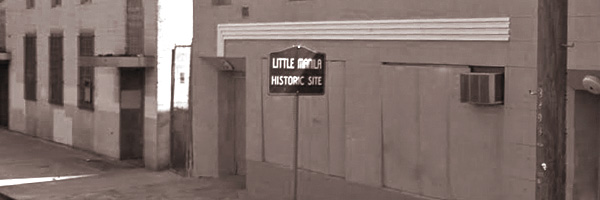
For more information, and to join as a Charter Member of the Museum, please visit theFANHS Museum website
Known for its historical site to Filipinos, Stockton was chosen as the future site for the Filipino American National Historical Museum by the FANHS Board of Trustees at the 1994 Conference held in San Francisco. This museum houses the many items of historical memorabilia that has been gathered by each chapter as well as other items donated from private citizens.
“The national society approved Stockton as a museum site because of its historic role as the center of Filipino American family and community life and labor activities,” said FANHS archivist Fred Cordova. Once the largest population center of Filipinos outside the Philippines, Stockton’s “Little Manila” attracted thousands of immigrants who found work and support systems here.
“Much of the birth of Filipino American history was ensconced in Stockton, and it’s part of our national society’s effort to preserve and promote what that history is all about,” Cordova said.
This museum reflects the many contributions that Filipino Americans have made throughout the United States.
Long road to creation of Filipino museum nearly over

Letty Perez of Stockton has spearheaded the effort to bring a Filipino museum to Stockton. CLIFFORD OTO/The Record
By Roger Phillips
Record Staff Writer
Posted Sep. 15, 2014 @ 8:00 pm
Original article @ Recordnet.com
STOCKTON — For 20 years, Leatrice Bantillo “Letty” Perez has been part of a group that has been dreaming and working and raising funds and dreaming some more.
The vision through two decades has been the establishment of a museum honoring and chronicling the struggles and successes of Stockton’s Filipino community. Exhibits for the museum are hidden for the moment in two storage units in north Stockton.
Now, after all those years, the Filipino-American National Historical Society’s first museum is close to becoming a reality in downtown Stockton.
If all goes according to plan, the small museum will open several months from now in the under-renovation Newberry Building, one of several planned new storefronts at the site at the northwest corner of Weber Avenue and Sutter Street.
“I said after my stroke (10 years ago), ‘I hope I will live until this day comes,’” Perez, the 85-year-old president of the historical society’s local chapter, said Monday morning as she sat in her south Stockton home. “We’ve been working at this so long. It’s time we had a place.”
By the time the museum opens, the Newberry Building is expected to be bustling.
A new daycare facility is scheduled to open at the site by the end of 2014, said David Garcia of the Cort Group development company. Additionally, Papa Urb’s Grill is slated by year’s end to open a Stockton branch of its popular Tracy-based Filipino-fusion restaurant in the Newberry Building.
“These are the exact kinds of businesses we want downtown,” Garcia said. “They’re local, and anytime you have a local entity coming in, they’re much more invested. Also, it’s great because they bring more people downtown, and they feed off each other.
“The more people you get here for any reason on the street, it makes the public feel safer. That’s the kind of vibrancy we want.”
According to the book “Filipinos in Stockton” by Dawn Mabalon and Rico Reyes, the first settlers from the Philippines arrived in Stockton near the end of the 19th century. Perez’s parents, Anastasio Bantillo and Virgilia Marella, moved to Stockton in the early 1900s.
Through most of the 20th century, Stockton was home to the largest community of Filipinos outside the Philippines. Perez says many of the migrants “had degrees and were capable lawyers, architects, engineers and teachers.”
“They wouldn’t hire you because you were Filipino,” she added. “If they hired you, it was for menial jobs.”
Stockton’s Little Manila neighborhood developed just south of where the Crosstown Freeway arose nearly a half-century ago. “Filipinos in Stockton” cites the construction of the Crosstown Freeway as pivotal in the uprooting of Little Manila.
Now, though, just a few blocks north of the old neighborhood, the new museum will provide a venue for telling the story of Stockton’s Filipinos in a 1,000-square-foot space.
“At some point we’d love to move into a larger space,” said Mel Lagasca, who, like Perez, has been working for 20 years to establish the museum. “We’ve reached our goal of getting a physical address. Hopefully now, it will take off like a rocket.”
Perez said the museum’s currently stored holdings are more than the Newberry Building site will be able to accommodate, so exhibits will rotate. She said she envisions an initial exhibit recreating the interior of a Delta islands bunkhouse like the ones Filipino farm-workers lived in nearly a century ago, with cots and mosquito netting and giant kettles for cooking.
“This is the start,” Perez said. “No matter how small a place, we need to have someplace to start displaying our Filipino-American museum. Without our past, how can we show where we are today?”
Contact reporter Roger Phillips at (209) 546-8299 or rphillips@recordnet.com. Follow him at recordnet.com/phillipsblog and on Twitter @rphillipsblog.
###
